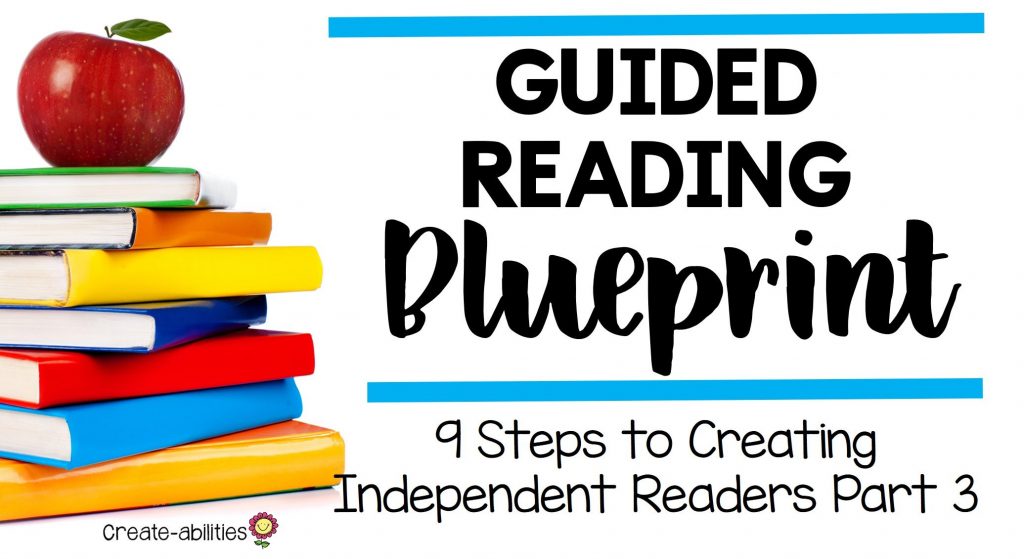
Guided Reading Blueprint: 9 Steps to Creating Independent Readers Part 3
Ready for part 3? Keep reading!
(Missed Part 1 and Part 2? Click on the links to read them.)
In parts one and two of this blog post series, we discussed how to prepare for guided reading, and how to properly facilitate independent reading during guided reading. In this final post, we’ll talk about some activities that support guided reading instruction, and how to use what you’ve learned about your students to plan for future guided reading.
7. ENGAGE IN LETTER OR WORD WORK
After your guided reading group has had a chance to discuss and summarize the content of the text, use the last few minutes of your time together to do some word work. Incorporating word work into your guided reading time helps to support independent reading by helping students understand how to sound out and comprehend the unfamiliar words that they encounter. Even proficient readers can benefit from having more opportunities to break apart multi-syllable words. This part of the lesson is short, but powerful. Find some words that are in the book you’re reading that you can break down as a group.
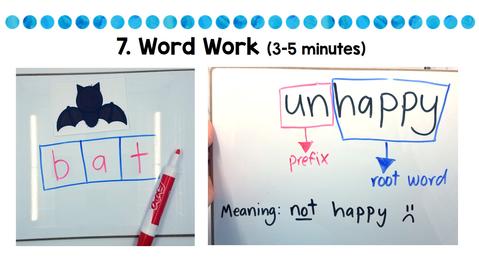
Note that this doesn’t take the place of lessons on words and their meanings. Noticing meaningful parts is a helpful way for students to approach multi-syllable words. This really helps with scientific or technical words as those words often need to be broken down into meaningful parts to be able to understand what they mean.
I will say that, for me, this skill was hard to make time for every day. I knew that this work is beneficial for all levels of readers, so I made sure that I was doing this with each group at least two or three times a week. However, I didn’t feel that it was in my readers’ best interest to cut off a good discussion about what we’ve read, for example, to do word work every day.
Ways to teach word work:
- Write sound boxes and segment sounds
- Divide words into syllables
- Sort word cards (CVC, CVCe, prefixes, suffixes, etc.)
- Use magnetic letters to build words
- Sound sliders
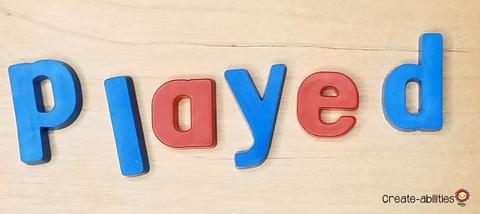
8. EXTEND UNDERSTANDING THROUGH WRITING AND DRAWING
Writing and drawing things out are great ways for readers to process information and extend their understanding of a text. As I mentioned in Chapter 1, guided reading is just one part of an effective literacy program, and guided reading with the teacher is just one station when doing guided reading centers. Alternate activities that include writing and drawing are great activities to do while students are at their desks or at another center. Most often, I would make assignments at the end of my time with each group, and then the group would rotate to their desks where they would work on the assignment individually. Keep reading for some writing and drawing activity ideas.
Guided Reading Notebooks
At the beginning of the year, every student was given a notebook that was cut in half. These notebooks were used to log guided reading days, and were called Guided Reading Notebooks. These notebooks came in handy when I felt it was beneficial to answer a question in writing, or to draw a summary of the text. Again, they usually completed these assignments at their desks after their time with me during the guided reading hour.

GUIDED READING JOBS
One approach to making individual assignments is to assign guided reading jobs. I found these to be extremely engaging for the students. I assigned a variety of jobs to students to teach several different reading skills:
- The Artful Artist
- The Questioner
- The Summarizer
- Word Wizard
- Passage Picker
- The Connector
- Character Caper
- Theme Team
- Structure Spy
- Inference Investigator
- Problem Solver
- Predictor
I cut these jobs out and put them on a ring. At the end of my time with each group, I would introduce the jobs. They would use their guided reading notebooks to note down their assignments. Then they’d take their assignments to their seats and work on them while I rotated to the next group. This is just a fun and engaging alternative way to make assignments that help reinforce learning.
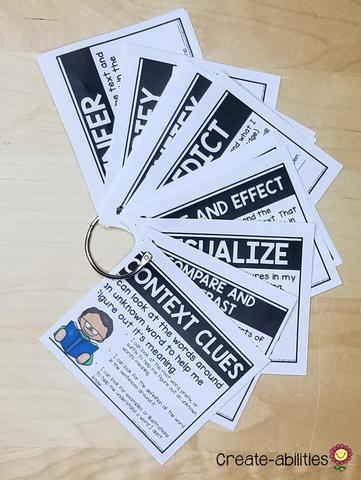
READING BOOKMARKS
A couple times a week, I would assign reading bookmarks to each student. These bookmarks could be filled out using any book they wanted. I used these to help me fill in the time after students had completed assignments at their desks. This was a fun way for them to continue to develop their writing, comprehension, and critical thinking skills using books that they enjoyed reading on their own.

9. REFLECT AND PLAN AHEAD
This step is pretty straight forward. You just want to make sure you’re taking some time, ideally directly after guided reading hour, to reflect on each of your groups, and make some notes on where you want to take things next. This is an excellent time to plan both long-term and your next guided reading hour. If you make a daily habit of this, planning ahead should only take a few minutes out of each day.
The secret here is to record what you learn, and where you want to go. Nothing will help you have a clearer picture of what’s going on with your students than writing everything down in easy-to-visualize ways.
Here are some notes I took when planning ahead. You can find these planning pages and more here.

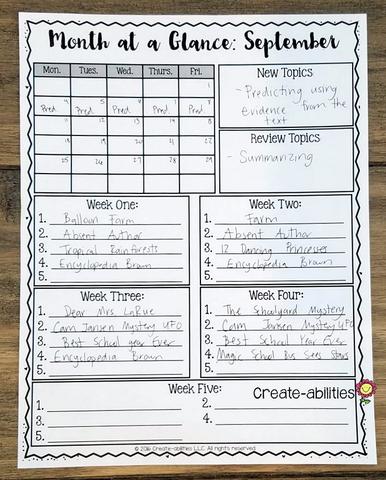

Want to learn more? Check out my Guided Reading Blueprint: 9 Steps to Creating Independent Readers webinar. It’s completely free and you get a certificate of completion just for attending.
Looking for print and go guided reading materials? I have everything you need for grades K-5. 🙂
Check out What Effective Guided Reading Looks Like here.
PEACE, LOVE, AND STICKY NOTES

Blog Categories
Meet the author


